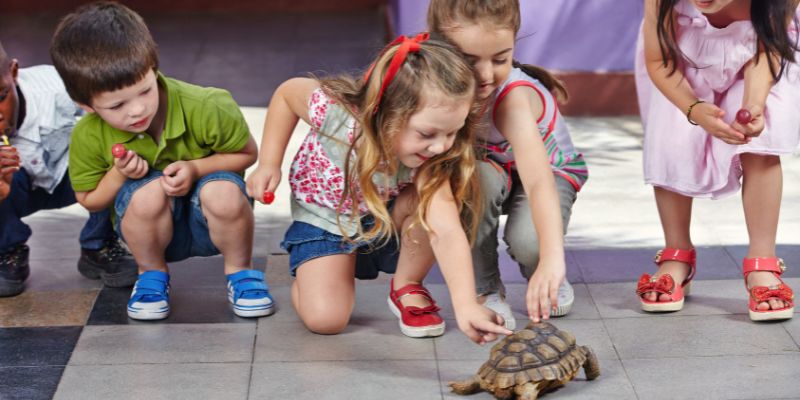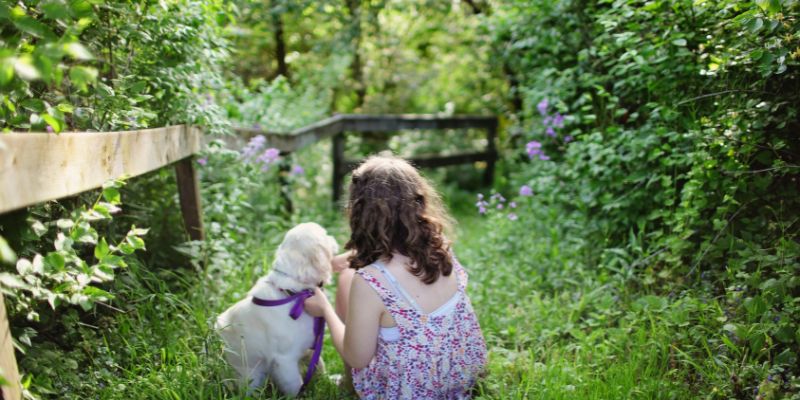Educational Adventures: How Petting Zoos Support School Curriculum Goals
In today's educational landscape, teachers are constantly seeking engaging, hands-on experiences that bring classroom concepts to life. At Swara Petting Zoo, we've discovered that animal interactions provide some of the most powerful and memorable learning opportunities available to students of all ages.
Over the past six years, we've welcomed thousands of students from across the UAE, working closely with educators to create meaningful experiences that support curriculum goals while inspiring a lifelong love of learning and respect for animals.
The Power of Experiential Learning
Why Hands-On Learning Works
Research consistently shows that students retain information better when they can see, touch, and interact with their subject matter. Animal interactions engage multiple senses simultaneously, creating rich learning experiences that traditional classroom methods simply cannot replicate.
Learning Retention Rates:
- Reading alone: 10% retention
- Hearing information: 20% retention
- Seeing demonstrations: 30% retention
- Hands-on experience: 90% retention
Multi-Sensory Educational Benefits
Visual Learning:
- Observing animal behaviors and characteristics
- Comparing sizes, colors, and physical features
- Watching animal movements and interactions
- Seeing cause-and-effect relationships
Tactile Learning:
- Feeling different textures (fur, feathers, wool)
- Understanding size and weight differences
- Experiencing gentle animal interactions
- Developing fine motor skills through feeding
Auditory Learning:
- Hearing various animal sounds and calls
- Listening to educational presentations
- Participating in group discussions
- Following verbal instructions for animal care
Curriculum Alignment by Subject
Science Education
Life Science Standards
Kindergarten - Grade 2:
- Living vs. Non-Living: Students observe and categorize animals as living organisms
- Basic Needs: Understanding what animals need to survive (food, water, shelter, air)
- Animal Characteristics: Identifying physical features and their purposes
- Habitats: Learning where different animals live and why
Practical Applications:
- Comparing rabbit fur to chicken feathers
- Observing how different animals eat and drink
- Discussing why goats have hooves and rabbits have paws
- Understanding how animals stay warm or cool
Advanced Life Science (Grades 3-5)
Animal Classification:
- Mammals, birds, and their characteristics
- Herbivores, omnivores, and carnivores
- Domestic vs. wild animals
- Animal families and breeding
Adaptation and Survival:
- How physical features help animals survive
- Behavioral adaptations for different environments
- Seasonal changes and animal responses
- Predator-prey relationships
Real-World Examples:
- Examining goat hooves for climbing rocky terrain
- Understanding why sheep have thick wool coats
- Observing how chickens use their beaks for different tasks
- Discussing how rabbits' large ears help them hear predators
Middle School Science (Grades 6-8)
Ecosystems and Biodiversity:
- Food chains and energy transfer
- Human impact on animal populations
- Conservation and sustainability
- Interdependence in nature
Genetics and Heredity:
- Observable traits in animal families
- Selective breeding in domestic animals
- Genetic diversity importance
- Inheritance patterns
Mathematics Integration
Early Elementary Math (K-2)
Counting and Number Recognition:
- Counting animals, legs, ears, eyes
- Simple addition and subtraction with animal groups
- Pattern recognition in animal markings
- Basic measurement concepts
Practical Activities:
- "How many legs do all the rabbits have together?"
- Measuring animal heights with non-standard units
- Sorting animals by size, color, or type
- Creating simple graphs of animal preferences
Elementary Math (Grades 3-5)
Data Collection and Analysis:
- Creating charts of animal characteristics
- Measuring and comparing animal sizes
- Calculating feed amounts and costs
- Time concepts through animal care schedules
Geometry Applications:
- Identifying shapes in animal enclosures
- Understanding symmetry in animal bodies
- Measuring perimeter of animal spaces
- Calculating areas for habitat needs
Sample Problems:
- "If each goat eats 2 cups of feed twice a day, how much feed do 4 goats need in a week?"
- "What's the total weight of all the animals if the pony weighs 200kg, each goat weighs 30kg, and each rabbit weighs 2kg?"
Middle School Math (Grades 6-8)
Advanced Problem Solving:
- Ratio and proportion in animal care
- Percentage calculations for nutrition
- Statistical analysis of animal data
- Algebraic thinking through animal relationships
Language Arts Enhancement
Vocabulary Development
Animal-Specific Terms:
- Scientific names and common names
- Descriptive adjectives for animal characteristics
- Action verbs for animal behaviors
- Habitat and care terminology
Academic Vocabulary:
- Observation and description skills
- Compare and contrast language
- Cause and effect relationships
- Sequence and process words
Writing Opportunities
Creative Writing:
- Animal adventure stories
- Descriptive paragraphs about favorite animals
- Poetry inspired by animal observations
- Fictional narratives from animal perspectives
Informational Writing:
- Animal fact reports
- Care instruction guides
- Observation journals
- Persuasive essays about animal welfare
Sample Writing Prompts:
- "Describe your favorite animal using all five senses"
- "Write instructions for caring for a classroom pet"
- "Create a story about a day in the life of a farm animal"
- "Persuade someone to visit a petting zoo"
Reading Comprehension
Pre-Visit Preparation:
- Reading books about featured animals
- Research projects on animal habitats
- Following written instructions for animal interactions
- Comprehending safety guidelines
Post-Visit Extensions:
- Reading additional resources about observed animals
- Comparing book descriptions to real experiences
- Following up with related literature
- Creating class books about the experience
Social Studies Connections
Cultural Studies
Animals Around the World:
- How different cultures use and care for animals
- Traditional roles of farm animals in various societies
- Cultural celebrations involving animals
- Historical relationships between humans and animals
UAE Heritage:
- Traditional Emirati animals (camels, goats, chickens)
- Bedouin lifestyle and animal husbandry
- Modern farming in the UAE
- Conservation efforts in the region
Geography Integration
Animal Habitats and Climates:
- Mapping where different animals originate
- Understanding climate needs for various species
- Discussing animal migration patterns
- Exploring how geography affects animal characteristics
Economic Concepts:
- Understanding the cost of animal care
- Learning about farming as a business
- Discussing supply and demand for animal products
- Exploring careers related to animal care
Character Education and Social Skills
Empathy Development
Understanding Animal Needs:
- Recognizing when animals are comfortable or stressed
- Learning to approach animals gently and respectfully
- Understanding that animals have feelings and needs
- Developing patience when animals don't cooperate
Responsibility Building
Care-Taking Skills:
- Following instructions for animal safety
- Taking turns and sharing experiences
- Helping classmates who are nervous
- Cleaning up after activities
Social Interaction
Collaborative Learning:
- Working together to care for animals
- Sharing observations and discoveries
- Supporting nervous classmates
- Celebrating group achievements
Grade-Level Specific Programs
Early Childhood (Ages 3-5)
Program Focus: Sensory exploration and basic animal awareness
Key Activities:
- Gentle petting with adult assistance
- Simple animal sound identification
- Basic animal needs discussion
- Sensory exploration of different textures
Learning Objectives:
- Develop gentle touch and respect for living things
- Learn basic animal names and sounds
- Practice following simple safety rules
- Build confidence through positive animal interactions
Curriculum Connections:
- Pre-literacy skills through animal books
- Pre-math concepts through counting
- Social skills through group activities
- Fine motor development through feeding
Primary Elementary (Grades K-2)
Program Focus: Basic animal science and classification
Key Activities:
- Animal characteristic observation and recording
- Simple classification exercises (big/small, fur/feathers)
- Basic animal care demonstrations
- Habitat discussion and comparison
Learning Objectives:
- Understand living vs. non-living concepts
- Identify basic animal needs and characteristics
- Practice observation and recording skills
- Develop vocabulary related to animals and science
Assessment Opportunities:
- Observation checklists for animal characteristics
- Simple drawings with labels
- Verbal sharing of favorite discoveries
- Basic classification activities
Upper Elementary (Grades 3-5)
Program Focus: Animal adaptation and ecosystem relationships
Key Activities:
- Detailed animal adaptation studies
- Food chain and ecosystem discussions
- Animal behavior observation and analysis
- Conservation and care responsibility projects
Learning Objectives:
- Understand how animals adapt to their environments
- Recognize relationships between animals and their habitats
- Develop scientific observation and recording skills
- Connect animal care to environmental responsibility
Extended Learning:
- Research projects on featured animals
- Habitat diorama creation
- Animal adaptation presentations
- Conservation action planning
Middle School (Grades 6-8)
Program Focus: Complex biological concepts and career exploration
Key Activities:
- Advanced animal biology and physiology
- Genetics and heredity observations
- Animal husbandry and care management
- Career exploration in animal-related fields
Learning Objectives:
- Understand complex biological processes
- Recognize genetic principles in animal breeding
- Explore career opportunities in animal care
- Develop advanced scientific thinking skills
Project-Based Learning:
- Animal care business planning
- Genetic trait tracking projects
- Conservation program development
- Animal welfare advocacy campaigns
Special Needs and Inclusive Education
Sensory Processing Support
Accommodations Available:
- Quiet spaces for overstimulated students
- Gradual introduction to animal interactions
- Alternative participation methods for sensitive students
- Sensory-friendly scheduling options
Autism Spectrum Support
Specialized Approaches:
- Predictable routines and clear expectations
- Visual schedules and social stories
- Reduced sensory input when needed
- Individual pacing and choice-making opportunities
Physical Accessibility
Inclusive Design:
- Wheelchair-accessible animal interaction areas
- Seated interaction opportunities
- Modified activities for different physical abilities
- Assistive technology integration when helpful
Teacher Resources and Support
Pre-Visit Materials
Preparation Packets Include:
- Curriculum alignment guides
- Vocabulary lists and definitions
- Pre-visit activities and discussions
- Safety guidelines and expectations
- Assessment rubrics and tools
During-Visit Support
Educational Enhancement:
- Professional educators leading sessions
- Curriculum-connected presentations
- Hands-on learning stations
- Real-time assessment opportunities
- Flexible programming for different learning styles
Post-Visit Extensions
Follow-Up Resources:
- Additional learning activities
- Recommended books and resources
- Virtual follow-up sessions available
- Connection to ongoing projects
- Assessment and reflection tools
Assessment and Documentation
Formative Assessment Opportunities
During the Visit:
- Observation checklists for student engagement
- Verbal questioning and discussion
- Peer teaching and explanation
- Problem-solving in real situations
Summative Assessment Ideas
Post-Visit Projects:
- Animal research presentations
- Creative writing pieces
- Scientific drawings with explanations
- Group projects on animal care
Documentation Strategies
Portfolio Development:
- Photos of student interactions
- Written reflections and observations
- Scientific drawings and diagrams
- Project work and presentations
Professional Development for Educators
Teacher Training Opportunities
Workshop Topics:
- Integrating animal experiences into curriculum
- Safety protocols and risk management
- Assessment strategies for experiential learning
- Differentiation for diverse learners
Ongoing Support
Resources Available:
- Curriculum planning consultations
- Custom program development
- Professional learning community participation
- Research collaboration opportunities
Research and Evidence Base
Academic Research Support
Key Findings:
- 85% improvement in science concept retention after animal interactions
- Significant increases in empathy and prosocial behavior
- Enhanced engagement for students with learning differences
- Improved classroom behavior following animal therapy sessions
Long-Term Impact Studies
Follow-Up Research Shows:
- Sustained interest in science and nature
- Increased environmental awareness and action
- Better understanding of responsibility and care
- Enhanced social skills and peer relationships
Booking Educational Visits
Planning Process
Initial Consultation:
- Curriculum goal discussion
- Age-appropriate program selection
- Logistics and safety planning
- Assessment and follow-up coordination
Customization Options
Tailored Programming:
- Specific curriculum standard alignment
- Cultural and linguistic accommodations
- Special needs adaptations
- Extended learning project integration
Scheduling Considerations
Optimal Timing:
- Curriculum unit alignment
- Weather and seasonal factors
- Student energy and attention levels
- Follow-up activity planning
Conclusion: Transforming Education Through Experience
Educational visits to Swara Petting Zoo represent far more than field trips – they're transformative learning experiences that bring curriculum to life in ways that textbooks and videos simply cannot match. When students can touch a rabbit's soft fur while learning about mammal characteristics, or observe a chicken's behavior while discussing animal adaptation, learning becomes real, memorable, and meaningful.
Our commitment to educational excellence means that every visit is carefully designed to support your curriculum goals while inspiring wonder, curiosity, and respect for the natural world. We believe that when children connect with animals, they don't just learn facts – they develop empathy, responsibility, and a lifelong love of learning that extends far beyond the classroom.
Whether you're teaching kindergarteners about animal needs or middle schoolers about genetics and adaptation, we're here to support your educational goals with engaging, hands-on experiences that your students will remember and treasure for years to come.
Ready to bring your curriculum to life with an unforgettable educational adventure? Let's work together to create a learning experience that exceeds your expectations and inspires your students!
Ready to enhance your curriculum with hands-on animal education? Our educational specialists work with teachers to create meaningful learning experiences aligned with your goals. Contact us at +971 50 123 4567 to plan your school's visit!



